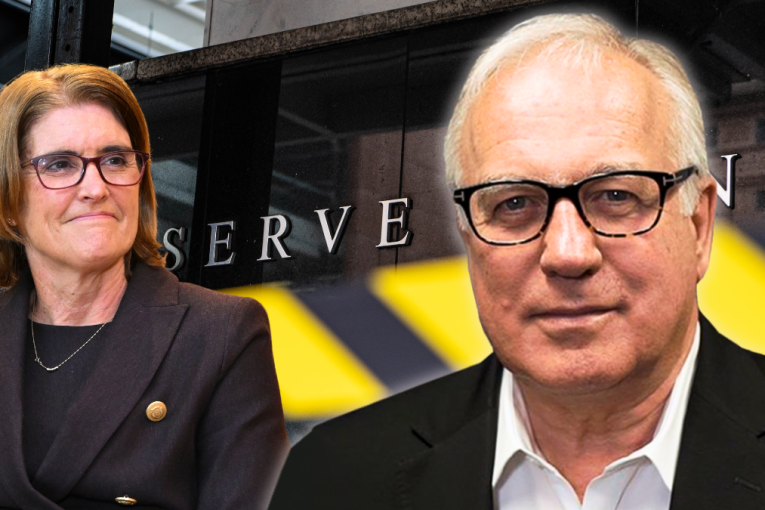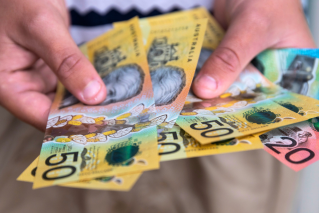Sharemarkets soared in the pandemic. So should you sell out now, or stay for the ride?


Some investors will be considering taking profits now after the remarkable sharemarket surge. Photo: Getty
Superannuation members enjoyed some of the best returns in a generation last financial year as global sharemarkets soared on the back of record-low interest rates.
Most Australians have their retirement savings held in ‘growth’ or ‘balanced’ funds within super – and these fund types delivered a median return of 18 per cent over the 12 months to June.
That was a really strong result and mainly thanks to surging share prices as global economies recovered quicker than anticipated.
But much of those returns only came about because the beginning of the pandemic crisis precipitated a fall in the ASX of almost 40 per cent – meaning much of the growth that happened after that point was simply the market making up for lost ground.
The Australian sharemarket finished the financial year about 8.3 per cent higher than where it was before the crisis in February 2020. It is now at record highs.
And now the question becomes: Should you stick with your current investments, or take some profits now, and not take the risk on the boom continuing?
Verse Wealth financial adviser Ashley Bishop said it depends on what stage of life you are at, as this will determine when you need to access your super or investments.
“If you are at or nearing retirement, you probably want to be thinking about your asset allocation now,” Mr Bishop said.
You can make a decision on that with the help of an adviser.
Reducing your exposure to shares
APRA-regulated Australian superannuation funds invested about 51 per cent of the retirement savings they look after in company shares in June 2021, up from 45 per cent in June 2020.
But Mr Bishop said you can move “a reasonable portion of your assets into more defensive positions” such as bonds, fixed-interest assets and cash.
That will ensure you have enough cash to draw upon when you need it, while keeping longer-term positions in the market to enjoy growth during your longer retirement years.
Many super funds now allow you to make up your own investment portfolio, which means you could move funds from a balanced option into assets like infrastructure or property to protect you from immediate sharemarket falls but still deliver growth over time.
“A younger person will have a longer-term time frame because although we know there will be a correction, eventually there will also be a recovery,” Mr Bishop said.
However, the timing of the recovery is important and it is not always quick.
After the COVID bust, shares had recovered all their losses within 14 months, but the markets took a decade to recover from the GFC and from the great crash of 1987.
Think about cash flow
If you are holding shares outside super, moving to cash might not be attractive with interest rates at virtually zero. So you will need to think about how much cash you actually need.
That means looking closely at your cash flow and remembering that if you sell shares outside your super fund you will likely be up for capital gains tax. So make sure to factor that in.
“We generally tell people to have three or six months’ living needs in cash,” Mr Bishop said.
So if you want to take more than that out of your share portfolio you could look at other options.
BetaShares chief economist David Bassanese says there could be attractive options in exchange-traded funds (ETFs).
“The thing about being defensive and going to cash and bonds is that cash is giving you a very poor return,” he said.
“Even bond funds, while they might pay out a little more in interest, if interest rates fall from their current low levels, the value of bond funds will fall.”
That’s because as rates climb, the value of bonds with lower coupon rates sinks.
Hybrids are a halfway house
“There is a halfway house between equities and cash in hybrid ETFs,” Mr Bassanese said.
Hybrid ETFs hold hybrid securities issued mostly by banks that have some characteristics of equities and some of bonds.
They are like equities in that they are less likely to be repaid if the bank were to collapse and, like equities, they pay out franked income.
But like fixed interest, they pay regular set amounts of income.
A typical hybrid ETF might pay out income of 2.5 per cent but when franking of 1 per cent is included it is worth 3.5 per cent in the hands of the investor.
Franking is where the investor gets a tax credit for the tax paid by the company and if you have no taxable income the ATO pays you the credit in cash.
Hybrid securities can also be hit by sharemarket crashes because of movements in interest rates but these tend to be temporary.
Although the ASX200 indicator fell 32 per cent last March, the BetaShares hybrid “fell 7 per cent and regained its value four months later,” Mr Bassenese said.
ETFs are also available for asset classes like property and infrastructure.
The New Daily is owned by Industry Super Holdings








